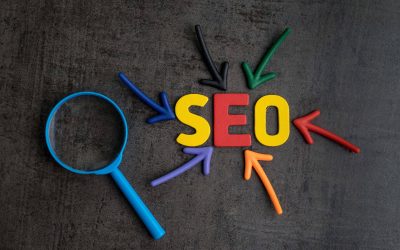Typically, organic and paid search are siloed functions within enterprise digital marketing. From the standpoint of strategy, user experience, budgeting, testing, and measurement, SEO and PPC rarely inform and support each other.
But is this the right way to go about things? “Enterprise Holistic Search” involves creating a synergy between different digital marketing channels like SEO and PPC.
A holistic approach to search not only reduces inefficiencies (in both man-hours and media dollars) – it helps various digital marketing channels perform together, and better.
From our experience managing enterprise SEO across industries, we have studied and tested 6 key factors that can help cultivate a solid synergetic balance between SEO and PPC.
1. Due consideration of searcher’s funnel stage in keyword research
We recommend brands taking a divide-and-conquer approach to keyword optimization – while ultimately keeping the customer’s needs at the center. For this reason, the customer buying journey is the foremost factor to look at when conducting keyword research.
For example, in the “research” journey state – i.e., high in the funnel – the searcher is simply looking for information. He or she is likely to seek out featured snippets or knowledge box results, both of which provide concise, simple answers.
At the same time, the searcher will probably ignore PPC ads, which tend to involve highly targeted calls to action.
That means the kinds of high-funnel terms used in the research phase are better tapped via SEO vs. PPC.
What about when the searcher moves down the funnel? For search terms that imply readiness to buy or proximity to point of sale (“near me” searches), you want to make sure you are winning every impression possible. Running both PPC and SEO is a strategy that would work here.
At iQuanti, the buyer journey is integral to our approach to enterprise SEO. We aim to classify search terms into journey buckets at the very beginning of a client engagement.
2. Understanding the type of searcher
Today, search goes beyond just keywords and search queries. It’s just as important to identify who the searchers are as it is to recognize their intent.
Some key questions to ask:
- Is the user familiar with your brand?
- Does the searcher already have an account with you?
- Has the consumer engaged with your content in the past?
- Does the consumer fit into a demographic category with a higher purchase likelihood?
Uncovering insights about your customers empowers you to target people similar to them. With better targeting, you are more likely to get noticed at the right points in the buyer journey. And the better you understand your audience, the easier it becomes to incentivize them to move forward with a purchase.
When budgets are limited, we recommend prioritizing PPC and covering a wide spectrum of searches before setting out on a program of enterprise SEO.
3. Staying true to your business goals
The business’ unique challenges and goals should also dictate the SEO and PPC investment mix. A recently launched startup may need to invest more in PPC to win against established competitors. A company introducing a new product offering, on the other hand, should focus on enterprise SEO in concert with PR.
A mature brand looking to grab market share, meanwhile, will want to dominate search engine results pages (SERPs) by running both SEO and PPC simultaneously.
No matter what a firm’s priorities may be, efficiency gains can arise from coordinating PPC and SEO. Organic search rankings do fluctuate, so it’s important to maintain visibility into a single metric that ties SEO and PPC together – such as the incremental net cost of acquisition.
4. Understanding the state of the market
Market forces such as competition levels, bid costs, and relative brand strength are important considerations while deciding whether to invest in SEO or PPC.
For instance, a competitor with an established presence in the market is difficult to compete with organically. A targeted paid search strategy may be the more economical choice in such cases.
On the contrary, for keyword themes with a high cost-per-click or a low conversion rate, consider bidding down or not bidding at all – especially for the keywords for which you’re already ranking organically. You may want to take a closer look at improving SEO for these kinds of keywords.
5. Taking seasonality into consideration
Seasonal events, cyclical peaks in demand, or your calendar of special offers may require you to dominate SERPs on a short-term basis. In these instances, running PPC ads – versus maintaining an evergreen organic presence – will be a necessity.
If your business is subject to seasonal swings, prioritizing between SEO and PPC for the same set of keywords will need to change with time of the year to optimize for demand (and supply, if you offer limited-time promotions).
To get a handle on seasonality, you’ll not only need insight into consumer behavior within your market but the promotional calendar used by your brand. Consider how your SEO and PPC activities are coordinated with the rest of your sales and marketing organization – is there broad visibility into your search presence, and how it influences your sales funnel?
6. Type of product or business category
SEO vs. PPC prioritization varies based on product or category, as well.
For example, a product with a longer research and consideration period will see higher search demand for upper-funnel terms. In this case, SEO (via content strategy) makes more sense than PPC. Developing content around top-of-funnel search terms will expand your organic presence when your target customer is conducting research.
The pace at which you change your products or pricing is another consideration. For a retailer with a fast-changing product catalog, higher investments in PPC are needed to keep up with the changing search query universe.
The Final Word
Across all six of these factors, what’s essential is thinking beyond the search channel: understanding who your customer is, how the buyer journey evolves, what the competitive landscape looks like, and the trends afoot in the wider world. Taking this kind of holistic approach in enterprise digital marketing can be a differentiator for your brand – one that drives major efficiencies in enterprise SEO.
Do you agree with our observations? Are there other factors you would consider while making PPC + SEO or PPC vs. SEO decisions? Tell us here.
Click to learn more about iQuanti’s Enterprise SEO services and Enterprise SEM services.




